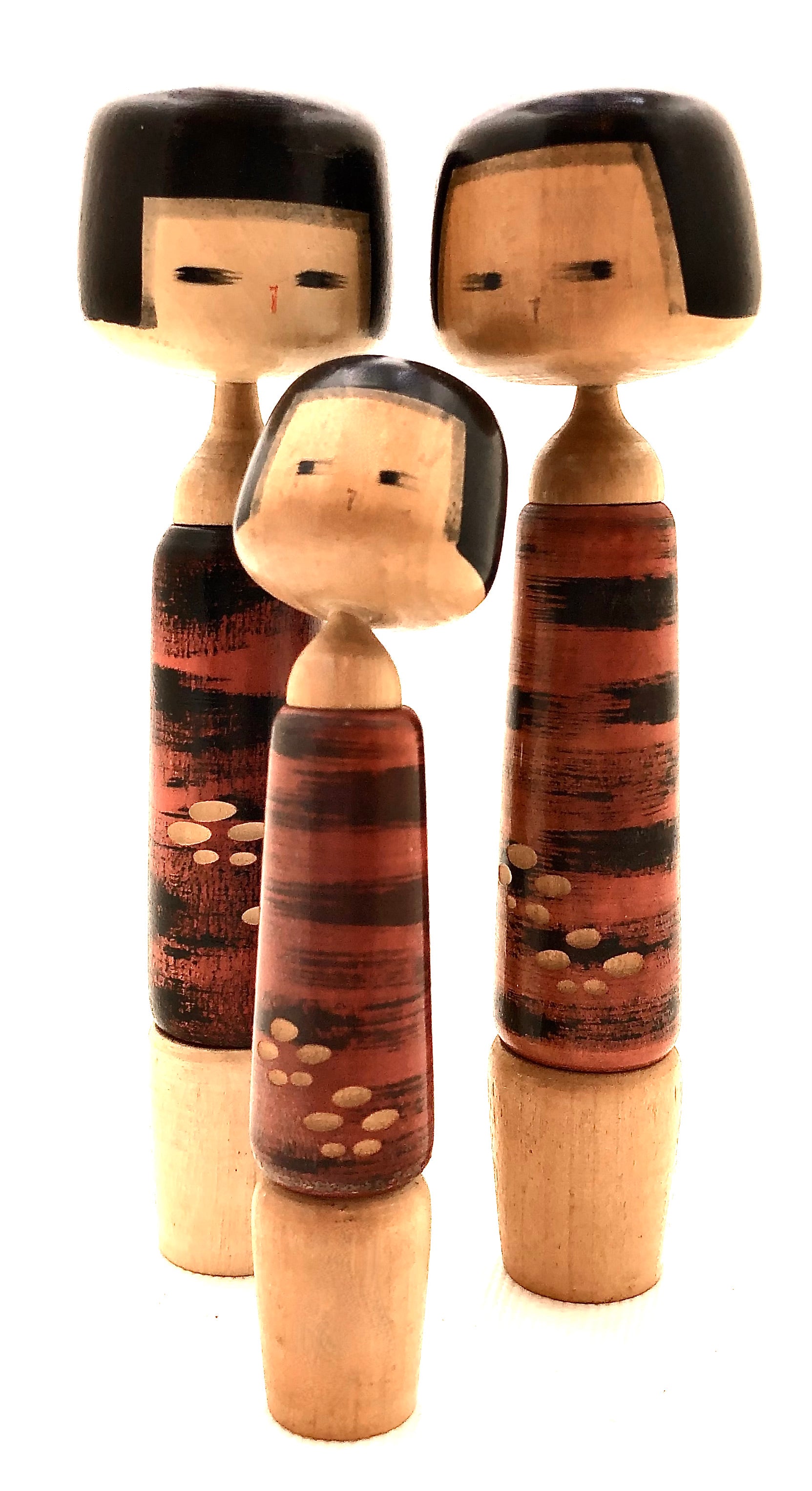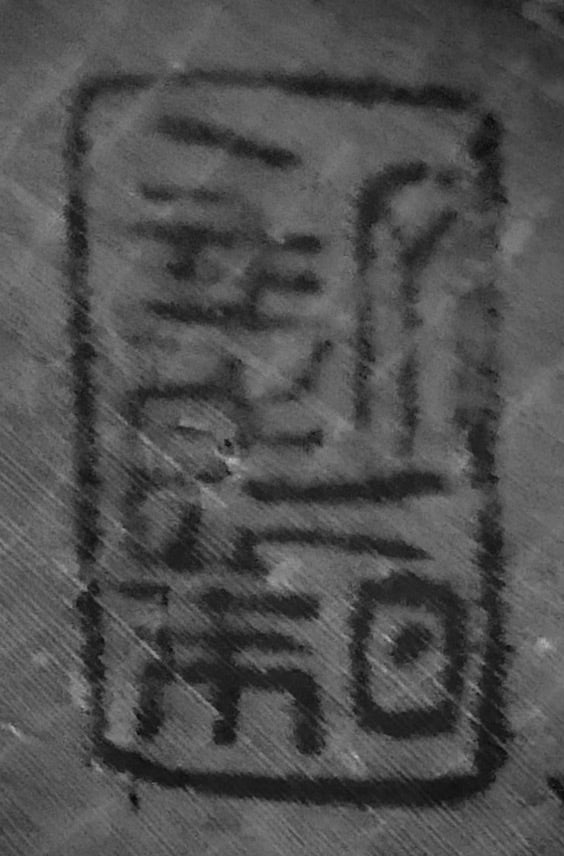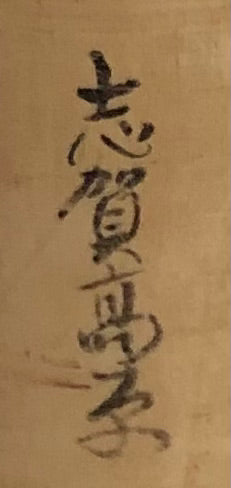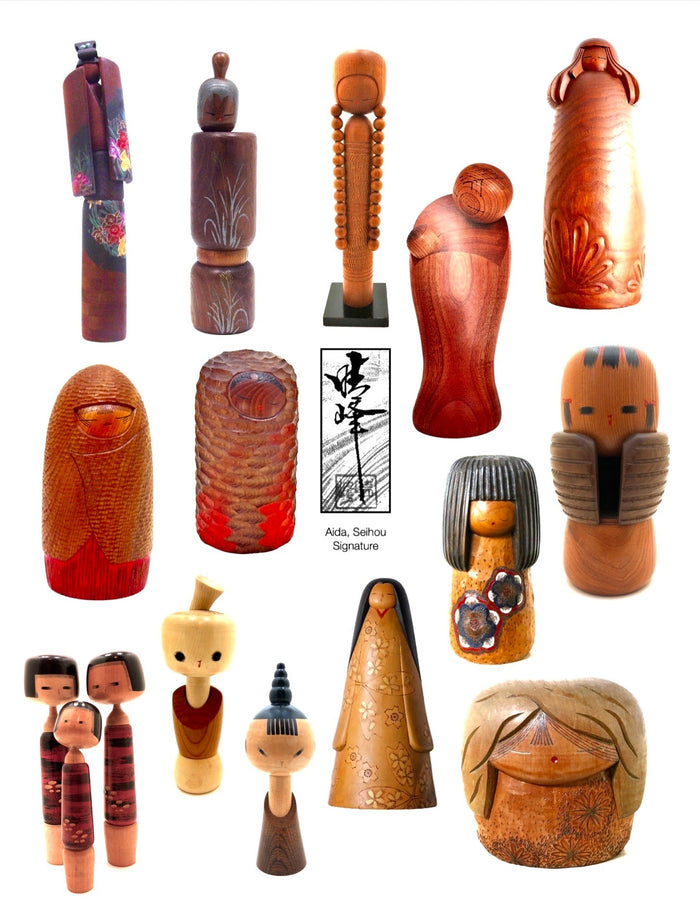


Vintage Sosaku Kokeshi entitled: “Shimai | Sisters” by Aida, Seihou
Dimensions: 7-3/4”h; 7-1/2”h; 6-0”h
Offered are three dolls representing sisters, each showing a beautiful balance between the traditional and the creative form and a motif created by two treatments: Black ’Roko Moyo’ line-work in horizontal irregular stripes, and carved cherry blossoms on the front of each deep red garment. Each head shows a slightly different tilting as if in conversation. All have “bob” hair treatments, and eyes that show movement, with expressive, painted eyes. Incorporated on the back of one doll in the script is the title, and a red impressed stamp on the bottom by Aida-san.
Condition: Excellent, pristine original condition, archival quality because of the uniqueness of the doll.

Artisan
Woodworker: Aida, Seihou
1926-1998
Biographical History:
Aida-san, (a.k.a. Harumine), is a leading Sosaku Kokeshi artist who has won many awards since he began creating Kokeshi in 1947 and has produced award-winning dolls from 1962-1974. Aida was born in Yonezawa City, Yamagata Prefecture in the first year of the Showa era. Along with the Prime Minister’s Award, he also won top awards in the Modern Kokeshi Academy in 1972-74; the Minister of Education Encouragement Price at the National Modern Kokeshi Exhibition in 1974; and an award in 1993 at the Special Kokeshi Federation Anniversary Exhibition. He is acknowledged as one of the leading early artists in the Sosaku movement. His eldest son, Yoshiki has taken over the family name and is exclusively a sedcond generation craftsman of Sosaku Kokeshi. Sheiho was a memeber of the Yonezawa Miyuki Association until his death.
Collector's note – descriptive qualities, standard characteristics & ornamentation styles:
Kimono design and motifs are understated with chattering giving a rich textured surface, or intricately handpainted with seasonal and natural flora elements. The natural wood, typically the deep coloration and graining of the Enju, (Pagoda tree wood) and Birch, (Kabanoki), provides a basis for his creations, which, in most cases are minimally painted, and ornamented. The faces on his dolls are meant to be more expressive, and minimally rendered and incorporate a suggestion of a nose and expressive eyes. He always celebrates the garment worn with distinctive hairstyles when emphasized.
Explore & Learn More about Woodworker: Aida, Seihou